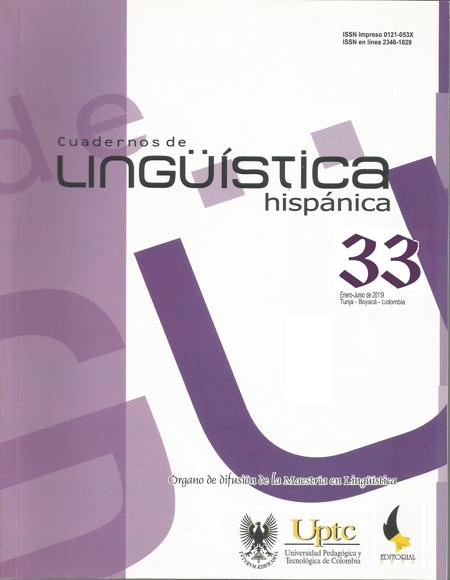Acoustic Analysis of Formants at the Intersections of /n/ with Assimilated Occlusives

Abstract
This article finds out which is the trace in the spectrogram of the trajectories of the first and second formants, at the intersections of the segments of /n/ followed by the bilabial and velar occlusive consonant in sequences of regressive assimilation, by means of the analysis voice of Praat software. The sample is extracted from the spontaneous speech of 18 people of Tunja (11 women and 7 men). From the analysis of the spectrograms three patterns leave for the sequences [mp], three for [mb], two for [ŋk] and one for [ŋg], according to the path of F1 and F2 at the intersection of the segments studied, occurred in the explosion bar of the occlusive consonant, where in all cases the two formants show rise or fall with respect to their travel. It is also concluded that according to the route of F1 and F2 there is no categorical certainty with which it can be identified if it is a bilabial or velar segment according to the spectrogram; however, there are some trends.
Keywords
formant chain, spectrogram, first formant, second formant, /n/, bilabial occlusives, velar occlusives, regressive assimilation
References
Asensi, L., Portolés, S. & Del Río, A. (1998). Barra de explosión, VOT y frecuencia de las oclusivas sordas del castellano. Estudios de Fonética Experimental, 9, 221-242.
Boersma, P. & Weenink, D. (2015). Praat (Versión 6.0.04) [Software] Recuperado de Praat: doing phonetics by computer: http://www.fon.hum.uva.nl/praat/
download_linux.html.
Borzone, A. (1980). Manual de fonética acústica. Buenos Aires: Hachette.
Dilley, L. & Pitt, M. (2007). A Study of Regressive Place Assimilation in Spontaneous Speech and its Implications for Spoken Word Recognition. Journal of the Acoustical Society of America, 122(4), 2340–2353.
Frías, X. (2001). Introducción a la fonética y fonología del español. Ianua Revista Philológica Románica.
García, M. & Rodríguez, M. (1997). Estudio acústico de las consonantes nasales del español. Estudios de fonética Experimental, 9, 37-64.
Garrido, J. M., Machuca, M. J. & De la Mota, C. (1998). Prácticas de fonética. Lengua española I. Bellaterra: Universitat Autònoma de Barcelona.
Gil, J. (1988). Los sonidos del lenguaje. Madrid: Síntesis.
Hardcastle, W. J. (1994) Assimilation of Alveolar Stops and Nasals in Connected Speech. In J. Windsor Lewis (editor), Studies in General and English Phonetics in Honour of Professor J. D. O’Connor (pp. 49–67. London: Routledge.
Hernández, R. (1991). Metodología de la investigación. México, D. F.: McGraw-Hill.
Honorof, D. (1999). Articulatory Gestures and Spanish Nasal Assimilation. (Tesis doctoral). Recuperado de https://www.researchgate.net/publication/
33941768_Articulatory_gestures_and_spanish_nasal_assimilation.
Llisterri, J. (2016). La descripción fonética y fonológica del español. Barcelona: Departament de Filologia Espanyola, Universitat Autònoma de Barcelona. Recuperado de http://liceu.uab.es/~joaquim/phonetics/fon_esp/
fonetica_espanol.html.
Real Academia Española. (2011). Nueva gramática de la lengua española. Fonética y fonología. Madrid: Espasa.
Real Academia Española. (2014). Diccionario de la lengua española (23 ed.). Recuperado de http://dle.rae.es/?id=JQukZIX.
Ullman, P. (2006). Asimilación progresiva de /n/. Anuario de Estudios Filológicos, 29, 295-297.